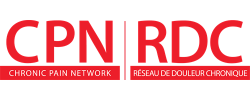| Return |
Patient Evidence Summary

Doctor, I have chronic tendon pain that has not improved with physiotherapy and rest. Can platelet-rich plasma injections help?
For people with long-term tendon pain that has not improved with usual treatments like physiotherapy, platelet-rich plasma (PRP) injections may offer modest pain relief. The most reliable evidence was seen at 12 months. However, results varied widely across studies including the tendon location treated (i.e., elbow, knee, Achilles), so it is still uncertain how well PRP works for everyone.
What is the evidence?
SUMMARY OF FINDINGS
Comparison of Platelet-Rich Plasma injections versus non-surgical treatments
| Outcome | Change in Pain Score*# | Quality of Studies |
|---|---|---|
| Pain score at 6 months | People who had PRP injections rated their pain 0.83 points lower than people who had other treatments. | Moderate to High |
| Pain score at 12 months | People who had PRP injections rated their pain 1.11 points lower than people who had other treatments. | Moderate to High |
*Visual Analog Scale, a 10-point scale where 0 means no pain and 10 means the worst pain possible (most people would notice a reduction in pain of 1 point); #Results were similar for people with upper limb and lower limb tendinopathies.
What kind of study was this?
This was a systematic review and meta-analysis. A systematic review summarises all available studies on a health care intervention to provide high quality evidence on the effectiveness of that health care intervention.
Who? This meta-analysis included 6 randomized controlled trials involving 380 people with chronic tendinopathy that had lasted more than 3 months and had not improved after treatment such as physiotherapy or rest. The studies focused on tendinopathy of the elbow, knee (patellar), and heel (Achilles) tendon.
What? The reviewers included studies that compared platelet-rich plasma (PRP) injections with other non-surgical treatments such as corticosteroid injections, dry needling, or placebo (saline).
Treatment/Intervention | vs | Placebo/another treatment |
|---|---|---|
Platelet-rich plasma injection(s): Platelet-rich plasma (PRP) is made from a person’s own blood and contains high levels of platelets, blood cells that stop bleeding and help the body to heal. Most studies used a single PRP injection, although the volume varied (typically 3–7 mL). All PRP was concentrated to at least 3 times the normal platelet level in blood. | Placebo (saline injection): These were typically single injections of saline (salt water), which does not contain any active ingredients. Corticosteroid injections: Usually one injection was given. Types of steroids and doses varied (e.g., triamcinolone, methylprednisolone) and details were not always reported. Dry needling (also called percutaneous needle tenotomy): One session was typically performed using a thin needle (without medication) to treat the injured tendon. |
Why was this research done?
Tendinopathy can cause pain and limit movement. It affects the tissues that connect muscles to bones (tendons) and can develop from overuse, injury, or aging. It is especially common in people who are active or do repetitive movements for work.
Most people with tendon pain feel better with treatments like physiotherapy, rest, or anti-inflammatory medications. But for some, the pain doesn’t go away and keeps interfering with daily life. When this happens, other treatment options may be needed.
One of these options are platelet-rich plasma (PRP) injections, which injects the person’s own blood cells (platelets) which are rich in growth factors to support healing into the tendon. This review looked only at studies involving people who still had chronic tendon pain after trying the usual treatments, to better understand if PRP could help in these harder-to-treat cases.
The results are promising, but the studies were quite different from each other — including how PRP was prepared, how often it was given, and which tendon was treated. These differences make it harder to know exactly how well PRP works or who is most likely to benefit. More high quality research is needed to confirm its long-term benefits and reduce uncertainty caused by differences between studies.
This Evidence Summary is based on the following article:
Nadeau-Vallee M, Ellassraoui S, Brulotte V. Platelet-rich plasma (PRP) injections as a second-line treatment in patients with tendinopathy-related chronic pain and failure of conservative treatment: a systematic review and meta-analysis. Pain Med. 2025 Mar 12:pnaf022. doi: 10.1093/pm/pnaf022. PubMed
Published: Thursday, July 3, 2025
Please note that the information contained herein is not to be interpreted as an alternative to medical advice from a professional healthcare provider. If you have any questions about any medical matter, you should consult your professional healthcare providers, and should never delay seeking medical advice, disregard medical advice or discontinue medication based on information provided here.
|
This Evidence Summary was printed from the PAIN+ CPN website on 2026/01/05. To view other Evidence Summaries or to register to receive email notifications about new Evidence Summaries, please visit us at https://www.painpluscpn.ca/Articles/EvidenceSummaries |

|






 , McMaster University
, McMaster University